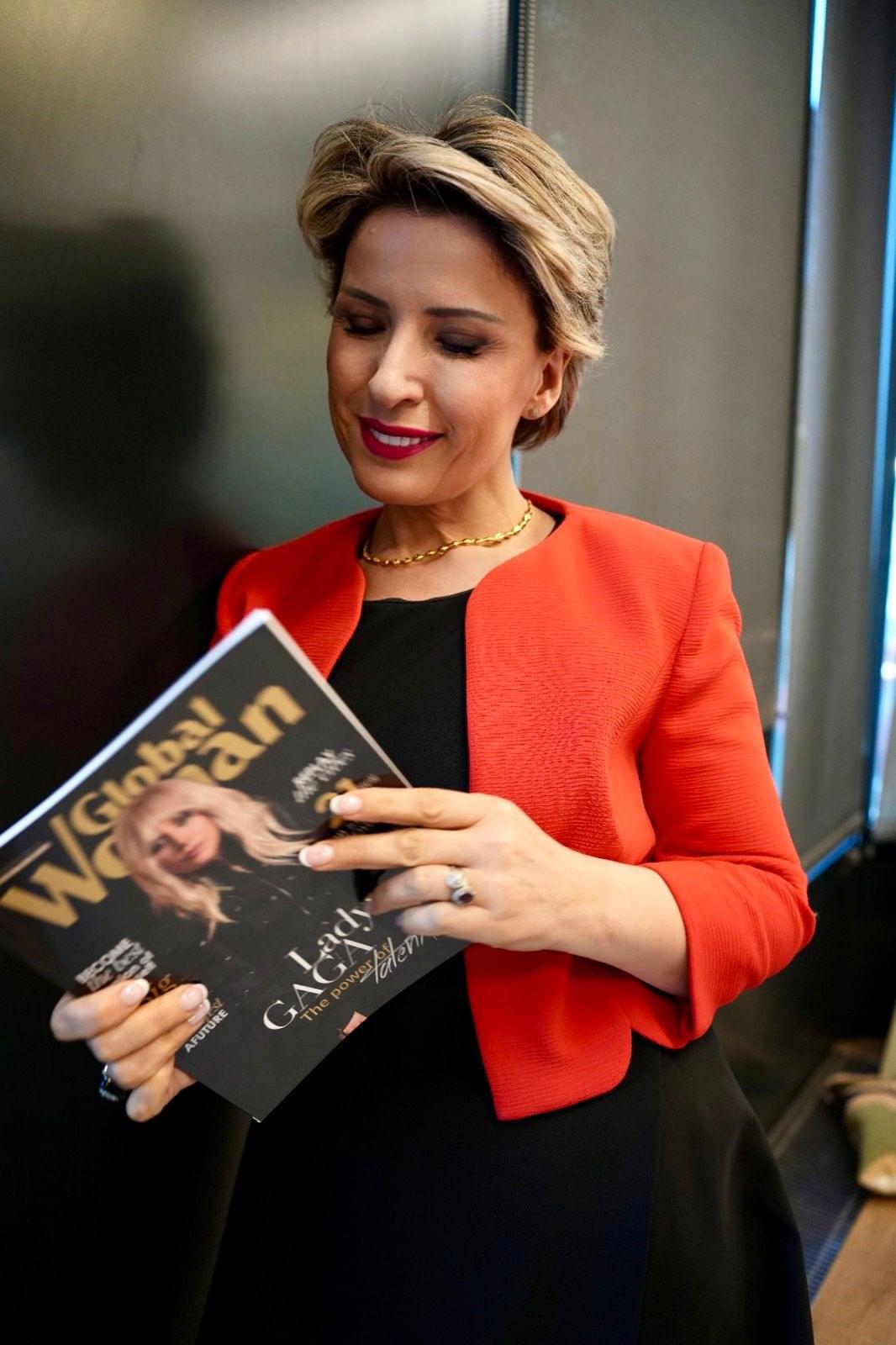
Dr. Kimberly Janson Shares Six Ways You Can Transform Your Company Culture Through Leadership
With over 25 years of experience as an executive development coach, Dr. Kimberly Janson is recognized today as one of the leading experts on how to create winning organizations. She shares simple steps on how organizations can reach new heights through cultivating company culture. Spoiler alert, it all starts with leadership!
Company culture is the backbone of any successful business. Employees need to feel like they are a part of something bigger than themselves to be productive and happy with their work. But how do you create a company culture that is capable of driving success, productivity, and employee morale?
Dr. Kimberly Janson, founder and CEO of Janson Associates, is all too familiar with the influence company culture can have on an organization, and says that it all starts with effective leadership.
“Employees can handle verve, variety, and volume,” Kim shared, “but they cannot handle volatility.” Because of this, leadership must show up consistently, positively, and purposefully to create the company culture necessary to see their organization thrive.
With over 25 years of experience transforming individuals, teams, executives, and companies worldwide, Kim has seen organizations reach unparalleled heights as a result of cohesive culture. She’s also seen many failures occur due to a lack of effective leadership.
Today, the world-renowned executive development coach shares the six ways you can transform your company culture through leadership.
Hasbro, Heinz, Johns Hopkins, and many other Fortune 100 companies have seen their success skyrocket by implementing Kim’s deep leadership expertise. Now, she is sharing her insights with the world to drive transformation like never before.
Dr. Kimberly Janson, founder and CEO of Janson Associates (PC: Bryce Austin Photography)
- Consistent Approach to How You Show Up
One of the most significant steps you can take towards transforming your company culture is to establish strong and consistent leadership.
“The shades of a leader’s mood reverberate throughout an organization,” expressed Kim. “It is imperative that leaders are mindful of what they’re bringing to the workplace in terms of their body language and facial expressions.”
Research shows that we send 2000-4000 “messages” a day based on our non-verbal behaviors. Allowing distress, anxiety, or anger to show up on our faces will ultimately indicate to others that things are not okay, creating an (unintended) feeling of unease or panic for our colleagues.
Effective leaders know they simply cannot show they are having a bad day. They must learn to regulate their emotions to avoid a ripple effect of doubt, insecurity, and fear throughout their organization. It is acceptable and even encouraged for leaders to demonstrate their humanity and authenticity…just don’t pass it on to their employees.
“The reality is, it’s not easy to be a leader,” Kim recognized, “but you have to choose the significance of assuming a leadership role knowing it’s a privilege.”
So what are some steps leaders can take to avoid wearing their emotions on their faces and negatively swaying company culture?
“What I recommend for a lot of my leaders,” advised Kim, “is to do different things to expunge energy. I’ve convinced a number of CEOs to go running in the morning and it’s a gift to their employees!”
Leaders are inherently under immense pressure and stress, but it is their responsibility to regulate these emotions before stepping foot into their workplace (both remotely and in-person) if they wish to see their organization succeed through positive company culture.
- Develop a Strong Belief System
Developing a strong belief system will help to ensure that company culture is cohesive. This will allow team members to work in service of shared values and create a unity of purpose in pursuit of organizational objectives.
“As individuals, our behavior is predicated on our belief system,” explained Kim. “It is the same for organizations. Organizations need to be intentional about their beliefs to guide effectively what behavior is and is not acceptable. Think of it as house rules. If you live with a bunch of people and we agree that we clean up after ourselves in the kitchen and one person doesn’t, that person is an outlier. Agreeing to important behaviors for us and then holding ourselves accountable is essential to create culture.”
We can look at this by examining the comparison between quality time and being on time. For some, the act of being on time is of the utmost importance. If this is imperative to your organization, make sure it is outlined in the company’s belief system. For others, giving attention to the current space you’re in takes precedence over being on time. An organization that incorporates this belief system wouldn’t adhere to as strict of a schedule, but would instead encourage the creation of valued and meaningful relationships.
“Leaders are at the helm of setting the tone on culture. It is referred to as ‘tone from the top’ for a reason,” shared Kim.
Being conscious and consistent about what belief system you want your organization to foster will drive collective success.
- Hire Effectively
For leaders within an organization to hire effectively, they must have a strong understanding of what their belief system looks like. Knowing this, they can understand which candidates will benefit the organization and which candidates will detract from it.
“When I was at Heinz, a belief we maintained was that entrepreneurs were really valuable, so we hired accordingly,” recalled Kim. “Each individual felt a sense of pride and ownership over his/her department or line of business, and the organization thrived as a result.”
For an organization like Heinz that values an entrepreneurial mindset, a potential candidate may be at the top of their class with top reviews from previous employers, but if she is more aligned with a hierarchical corporate structure, an entrepreneurial belief system would likely not align with her skill set.
“At times,” Kim expanded, “leaders need to cut the cord on certain employees who don’t serve the belief system of the organization. Leaders who allow people who are anti-culture to stick around ultimately create a breakdown of the system, limiting their potential for success because of it.”
When hiring, leaders have the ability to transform their organization by consciously selecting from a pool of candidates who align with the company belief system and simultaneously make it better. This promotes company culture, which will ultimately drive success.
- Prioritize Talent Management Approach
Hiring isn’t the only contributor to creating a great team. Maintaining talent is equally, if not more, important.
“Top talent wins the game all the time,” informed Kim. “It is top talent that inspires the most confidence. If I could make a wish for organizations, it would be to bless the world with an understanding of how to build strong talent management systems. It would change their world.”
With such value placed on the importance of maintaining top talent, what are simple things that employers can do to ensure retention?
“My book, Demystifying Talent Management, seeks to make talent management understandable and actionable. In the book, you will find there are five conversations employers can have with their employees that are sure to encourage top talent satisfaction,” informed Janson, “these are:
- The “What do you need me to do?” Conversation
- The “How am I doing?” Conversation
- The “Money” Conversation
- The “Development” Conversation
- The “How did I do?” Conversation
“Creating these conversations between leaders and their employees, especially ones in top talent positions, ensures that employees are feeling heard, recognized, and valued. This will aid in the longevity of your team and the overall success of your company.
“If we look at the CEO of Target Corporation and what he speaks about, for example, his whole conversation is about talent. His most important focus is on people, and he allocates his time accordingly,” shared Kim.
Well, if we look at Target today, they’ve experienced consistent market growth, valued recently at $210.61/share, their highest valuation to date. Clearly, their CEO is doing something right with his talent obsession!
- Understand and Implement Emotional Intelligence
Emotional intelligence (referred to as EQ) is one of the most critical components of an effective leader.
“I just came across a powerful study that indicated 75% of CEOs are turning over in three years, they get hired for their IQ, and fired for their EQ” informed Kim. “In a study I recently concluded interviewing more than 50 CEOs from around the world on determining leadership potential, EQ surfaced near the top of the list for what CEOs are using to determine leadership potential.”
So how can a leader bring emotional intelligence into their day-to-day encounters?
“Leaders can easily increase their emotional intelligence in the workplace by doing significant work in the four areas of EQ,” shared Kim. “These are:
- Self-awareness – reflecting internally before blaming externally
- Self-regulation – your actions create a reaction, ensure that reaction is positive
- Empathy – feeling for what your employees are going through and how you can help them
- Trust – believing your employees are capable of the work they are doing.
“If a leader can excel in those four areas of focus, they provide an immense amount of value to their organization and are likely to see their tenure extend immensely.”
Company culture grows in relation to the amount of emotional intelligence that is applied by leaders to their teams, with success being a result of this growth.
- Establish Personal Style
Finally, leaders must establish their personal style in order to cultivate company culture that aligns with who they are. This requires first understanding their personal style!
“There are so many great style assessments out there,” Kim informed. “One of my favorite books on the topic is Dave Mitchell’s The Power of Understanding Yourself. This book is a great explanation of different styles and how to navigate them.”
When leaders take the time to understand their personal style, they can then understand what kind of culture they wish to create in their organization.
“The trick about leadership styling and culture,” expanded Kim, “is knowing your own and then having the skill to diagnose different styles around you.”
By being able to tailor your message to a specific audience, leaders can effectively communicate to a diverse team, leading to the cultivation of culture.
Ultimately…
Ultimately, leaders need to ask themselves, “How do I create an environment where people can thrive?”
By employing the six suggestions above, they can create an environment rich with growth, trust, respect, and ultimately, success. The power in these suggestions is using them in combination with each other and having the discipline to operationalize these ideas in a meaningful way.
“If you want to be a good tennis player and your backhand isn’t great, you need to work on it,” concluded Kim. “Or for a golfer striving to hone your swing. It’s the same to be an incredibly strong leader – you need to work diligently to create culture and continue to lead with discipline and purpose to keep it.”
Discover how Dr. Kimberly Janson can help you and your organization unlock your full potential through her transformative industry tips – don’t get bogged down by your own leadership inadequacies.





